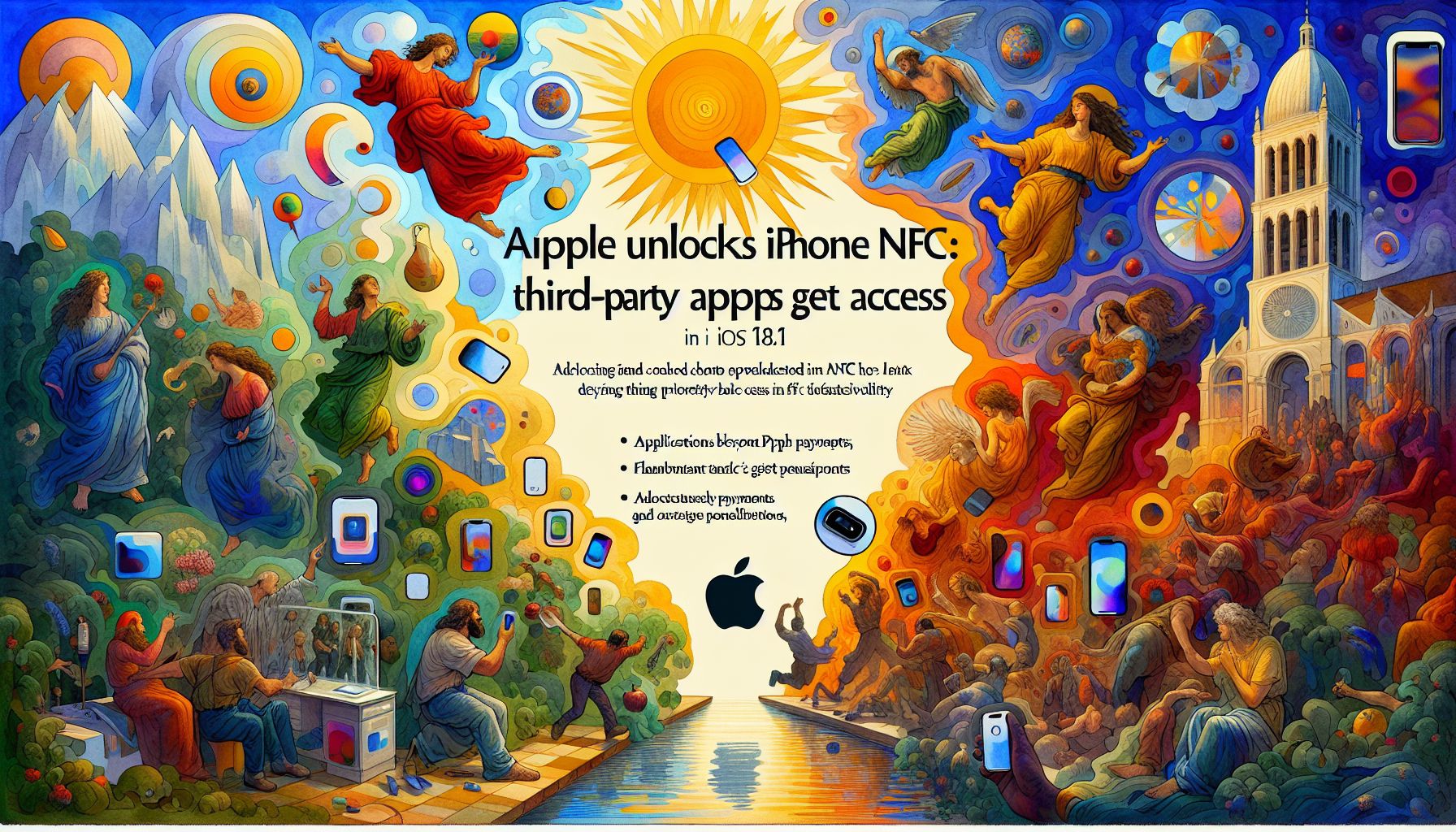Apple Unlocks iPhone NFC: Third-Party Apps Get Access in iOS 18.1

Cupertino, Thursday, 15 August 2024.
Apple announces a significant shift, opening its iPhone NFC chip to third-party developers with iOS 18.1. This change allows for contactless payments and various NFC-based services beyond Apple Pay, potentially revolutionizing mobile transactions and digital access.
Expanding NFC Capabilities
The release of iOS 18.1 this fall will mark a pivotal moment for Apple and its user base. By unlocking the iPhone’s NFC (Near Field Communication) chip for third-party developers, Apple is broadening the spectrum of contactless transactions that can be conducted through iPhones. This move is set to enhance user experience by allowing a variety of NFC-based applications beyond Apple Pay, such as digital car keys, hotel keys, and loyalty programs.
How It Works
Starting with iOS 18.1, the new NFC and Secure Element (SE) APIs will enable developers to incorporate contactless transactions within their apps. Users can perform in-app transactions for in-store payments, closed-loop transit systems, corporate badges, and even event tickets. The SE is an industry-standard, certified chip designed to store sensitive information securely on the device, ensuring that user data remains protected during transactions[1].
Global Rollout
Apple’s expansion of NFC capabilities isn’t limited to the European Union, despite initial regulatory pressures from the EU. The new APIs will first be available to developers in the United States, Australia, Brazil, Canada, Japan, New Zealand, and the United Kingdom, with additional markets to follow[2]. By setting a global precedent, Apple aims to standardize secure, contactless transactions across its devices worldwide.
Developer Challenges
While this development presents numerous opportunities, there are hurdles for developers. They must enter into commercial agreements with Apple, request the NFC and SE entitlement, and pay associated fees. Apple has yet to disclose the exact costs, leaving developers to weigh the benefits against potential expenses[3].
User Control and Security
Apple promises that users will retain control over their contactless apps. Through iOS Settings, users can designate a third-party app as their default contactless payment option, accessible via a double-click of the iPhone’s side button. This flexibility, coupled with Apple’s robust security measures such as biometric authentication and the Secure Enclave, ensures that user privacy and security remain paramount[4].
Broader Implications
The implications of this move extend beyond just payments. With the NFC chip now open to third-party developers, we can expect a surge in innovative applications leveraging this technology. From streamlined transit systems to enhanced access control in corporate environments, the possibilities are vast and varied. This shift not only augments the utility of the iPhone but also sets a new standard for mobile technology[5].
Conclusion
Apple’s decision to open the NFC chip in iPhones to third-party developers is a game-changer, setting the stage for a new era of contactless interactions. As iOS 18.1 rolls out this October, users and developers alike will begin to experience the expanded capabilities and enhanced functionalities that this innovation brings. While challenges remain, the potential benefits far outweigh the hurdles, promising a more connected and seamless digital experience.

